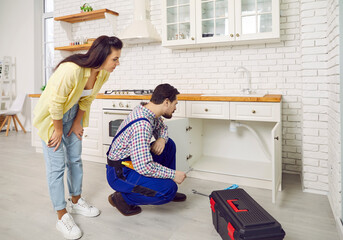
Rubbish Collection Perth is transporting waste from residential and commercial areas to landfills and recycling centers. Despite its prominence in the public eye, this is a labor-intensive task that requires specialized machinery and skilled workers.
The collection and disposal of solid waste is a critical service to the public. In addition to providing basic sanitation, garbage collection also helps to protect the environment and provide a safe environment for pedestrians. It is important that residents and businesses place refuse in the correct containers and follow the rules of the City’s garbage collection service. This ensures that all waste is collected safely and efficiently.
If you are not sure what day your trash is collected or if there are any holidays that affect collection, please contact the Sanitation Division. They can answer your questions and provide you with additional information on when to set out your garbage, recycling and yard waste for collection. They can also help you schedule a special pick up for bulk items.
Garbage, recycling and organics are collected weekly from the curbside. It is recommended that you place your bins out at 7 a.m. on your collection day. If you have back-door service, you may set your bins out one hour earlier on the morning of collection. Please make sure that your bins are placed in the correct location and not blocking access for pedestrians.
There are no monetary constraints on how much garbage you can put out for collection. However, there are several environmental and health concerns associated with putting too much garbage out at once. It can encourage fly breeding, and it can cause odours to build up. In addition, putting too much trash out for collection can be dangerous to the workers who are picking it up.
Many cities have implemented volume-based garbage fees in order to encourage waste reduction. These structures, which are known as variable pricing or pay-as-you-throw (PAYT) systems, are an alternative to traditional flat rates and have four major benefits: service cost visibility, waste reduction, independent access to capital, and fairness.
Most cities use a structure called special revenue funds to account for garbage fees, which is more transparent than letting these revenues accumulate into general fund accounts. However, these funds are easily raided by officials, which can limit pressure to increase or decrease fees based on changes in the cost of service. A better solution is to create a separate public authority that sets and manages garbage fees. These agencies can also finance and coordinate disposal infrastructure and planning.
Recycling
Recycled materials are a crucial component of modern society. They help create new products and reduce the need to extract raw materials from the environment. The recycling process can be done at home or at a commercial recycling center. Several methods are used to collect recycled material, including buy-back centres (where consumers pay for their waste), drop-off centres and curbside collection. Consumers are encouraged to separate their materials for recycling and to leave caps and lids on containers. This improves the quality of recycled materials and increases their income.
While recycling is important, it does not solve all environmental problems. It does, however, provide an alternative to landfills. It is also an effective way to cut down on air pollution, water pollution and energy consumption. Whether it’s an old bottle or a paper cup, recycling can make the world a safer place.
Many people underestimate how much space is needed to store all the trash produced in a city or nation. However, the truth is that most of it does not require a lot of space at all. Statistician Bjorn Lomborg says that the Earth could fit our trash in a ten-mile-square, 255-foot-deep pile.
The biggest challenge is to encourage more people to participate in the recycling program. To do this, they need to understand the importance of recycling and how it works. People should learn more about the recycling loop, which is represented by the chasing arrows symbol. This loop is made up of three steps:
Many cities have started to adopt innovative programs to boost recycling rates. For example, San Francisco has a high rate of landfill diversion. Its refuse hauler has developed an efficient recycling system that is able to sort recyclables and reduce the amount of waste sent to landfills. In addition, it has created a thriving market for high-quality recycled papers. Other cities are using a pay-as-you-throw model to give residents financial incentives for producing less waste. This includes charging fees based on the size of the refuse bins that are picked up. These fees can range from a flat monthly or annual fee to a per-can price.
Transfer stations
A transfer station is a facility where garbage trucks and other large vehicles drop off their waste. These stations are key to cost-effective solid waste transportation for cities and municipalities. They take the burden off of small garbage collection trucks and help reduce chemical pollution and future soil contamination. They also cut energy costs and wear and tear on road surfaces. This is especially important in rural areas where landfills may be far away.
During the waste disposal process, garbage is sorted, screened and compacted before it’s sent to its final destination. This is a vital step in the waste management process because it helps ensure that recyclable materials are disposed of properly and non-recyclable items are diverted from landfills. Additionally, it prevents odors from lingering in the air for long periods of time.
At a waste transfer station, garbage is sorted by material type and recyclability, size, and level of hazard. Then it’s loaded onto larger vehicles, such as a train or barge, for transport to its final destination. The process is labor-intensive and often involves a team of workers. However, with proper training, this is a safe and efficient method of waste disposal.
The 58 transfer stations in New York City are not evenly located and are usually too far from residential areas to be efficient. This waste related truck traffic results in unnecessary diesel powered pollution and traffic congestion. By constructing marine transfer stations, the City can alleviate these issues and improve air quality, reduce carbon emissions, cut traffic congestion, trim maintenance costs for roads and bridges, and improve the quality of life.
When people are dumping their trash at a waste transfer station, they should be sure that they have the appropriate equipment and follow all of the rules. Failure to do so could result in fines and other penalties from the city. The city will also report violations to the appropriate agencies.
Recycling can reduce a community’s trash load by millions of pounds per day. In addition, it saves energy and resources, such as fossil fuels and raw materials. For example, an aluminum can requires 95 percent less energy to recycle than it does to make from raw materials.
Garbage disposal
A garbage disposal is a great way to reduce the amount of trash you throw out. It also helps reduce odors and saves money on waste disposal costs. It can also help reduce the strain on septic systems. However, it’s important to understand how a garbage disposal works before you use one in your home. Using a disposal incorrectly can damage the unit and cause costly repairs. A disposal’s main function is to mince food into small enough pieces that they can be flushed out of the drain plumbing. Consequently, it’s important to know what you can and cannot put in your disposal.
Garbage disposals are designed to grind up most types of food waste, but they should not be used to dispose of fats or oils. When fats are poured down the disposal, they congeal and can clog the sink drain pipe. It is also a good idea to avoid putting large bones, chicken carcasses and fish heads into your disposal. They can be too hard to grind, and they may clog the disposal or septic system.
If you’re considering purchasing a garbage disposal, it’s a good idea to look for one that has a stainless steel body and a continuous feed motor. These models are less likely to jam and have a long lifespan. They’re also quieter and more energy-efficient than disposals with an induction motor.
Before you start using your garbage disposal, it’s important to make sure you have the proper tools. These tools will prevent you from damaging the unit and prevent you from causing unnecessary expenses. You’ll need a flathead screwdriver for locking the mounting ring that holds the disposal unit in place, and you’ll need a bucket to catch any water that might leak out of the drainpipe.
If you’re unsure about how to install your garbage disposal, consider hiring a professional or buying an installation kit. This kit contains a complete set of tools that will help you install your disposal safely and correctly. A kit can also include a drainpipe connector, which will help you connect the disposal to your kitchen drain.


